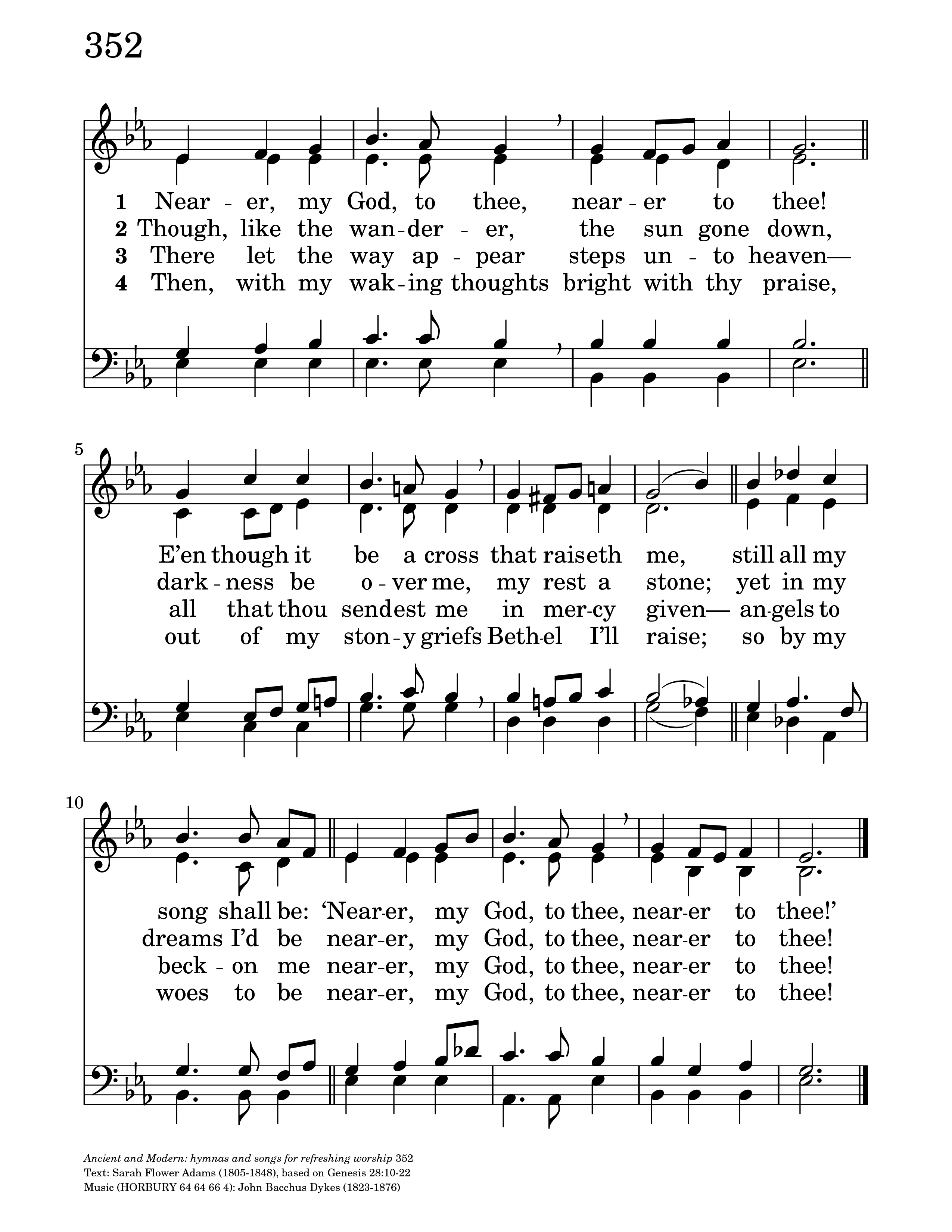E'en though it be a cross that raiseth me,
still all my song shall be,
nearer, my God, to thee;
nearer, my God, to thee, nearer to thee!
2. Though like the wanderer, the sun gone down,
darkness be over me, my rest a stone;
yet in my dreams I'd be
nearer, my God, to thee;
nearer, my God, to thee, nearer to thee!
3. There let the way appear, steps unto heaven;
all that thou sendest me, in mercy given;
angels to beckon me
nearer, my God, to thee;
nearer, my God, to thee, nearer to thee!
4 .Then, with my waking thoughts bright with thy praise,
out of my stony griefs Bethel I'll raise;
so by my woes to be
nearer, my God, to thee;
nearer, my God, to thee, nearer to thee!
5. Or if, on joyful wing cleaving the sky,
sun, moon, and stars forgot, upward I fly,
still all my song shall be,
nearer, my God, to thee;
nearer, my God, to thee, nearer to thee!
The hymn Nearer, My God, to Thee was written in 1841 by English poet and hymn writer Sarah Flower Adams, with music later composed by her sister Eliza Flower and, in other versions, by others such as Lowell Mason. Inspired by the biblical story of Jacob’s dream in Genesis 28—where Jacob sees a ladder reaching to heaven—the hymn expresses a deep yearning to draw closer to God, even through suffering and loss. Adams, who had a strong Unitarian faith and struggled with illness throughout her life, infused the hymn with a sense of spiritual longing and hope amid adversity.
Nearer, My God, to Thee gained profound historical significance due to its association with the sinking of the RMS Titanic in 1912. Survivors reported that the ship’s band played the hymn as the vessel went down, cementing its legacy as a symbol of faith and comfort in the face of death. Over time, it has been sung at many memorial services and moments of tragedy, treasured for its solemn beauty and message of closeness to God, even in life’s darkest hours.



No comments:
Post a Comment